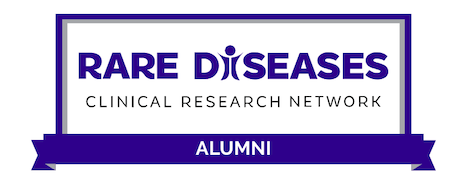Also known as congenital disorder of glycosylation type Ih
ALG8-CDG is an inherited condition that affects many parts of the body. Individuals with ALG8-CDG typically develop signs and symptoms of the condition during infancy. All affected individuals present with variable combinations of neurological abnormalities, including decreased muscle tone (hypotonia), developmental delay, a lack of muscle control or coordination of voluntary movements (ataxia), and seizure disorders.
Symptoms
Affected infants may have facial dysmorphism (epicanthal folds and hypertelorism), inverted nipples and abnormal fat distribution, abnormality of the gastrointestinal tract (diarrhea, vomiting, protein-losing enteropathy, and a failure to gain weight and grow at the expected rate (failure to thrive)), enlarged liver (hepatomegaly), thrombosis (blood clots in the deep veins), and abnormal accumulation of fluid in one or more cavities of the body (edema and ascites).
Infants with ALG8-CDG may develop lens opacity (cataract), retinal degeneration (retinitis pigmentosa) and crossed eyes (strabismus). Affected individuals also often present with skeletal abnormalities (clubfoot (equinovarus), joint laxity and subluxation, short digits (brachydactyly), and skin symptoms including pale skin and excessive skin wrinkling. Some affected individuals have structural heart abnormalities, or abnormal heart rate (arrhythmia).
Laboratory abnormalities include elevated liver enzymes, abnormal coagulation factor activities, hypoalbuminemia, renal tubulopathy, proteinuria, and hormonal imbalance (low blood sugar, hypothyroidism). Young individuals with ALG8-CDG who survive infancy may have intellectual disability, autistic features, and behavioral abnormalities.
During adolescence or adulthood, individuals with ALG8-CDG may have abnormal curvature of the spine (scoliosis/kyphosis), difficulty speaking (dysarthria) and weak muscle.
Symptoms reported in a minority of patients include rickets/osteoporosis, recurrent fractures, and recurrent infection.
There are 26 ALG8-CDG patients published in medical literature.
Diagnosis
Diagnostic testing relies on testing the appropriate glycosylation of common proteins (one commonly used glycoprotein is transferrin). This can be tested by different methods in blood. The ultimate diagnosis is genetic testing in blood. Individuals with ALG8-CDG have two faulty copies of the ALG8 gene.
Treatment and Prognosis
Severely affected patients may die in infancy or early childhood from complications of PLE, massive ascites, or bleeding tendency/thrombosis. The oldest ALG8-CDG patient is in his 30s. There is no curative treatment for ALG8-CDG, treatment focuses on the treatment of symptoms and prevention of complications.

